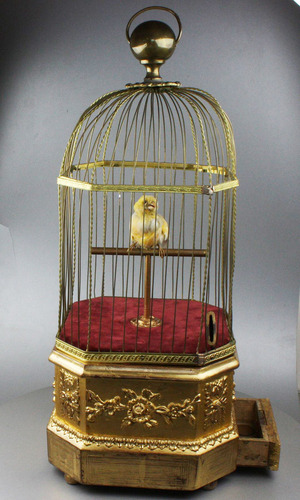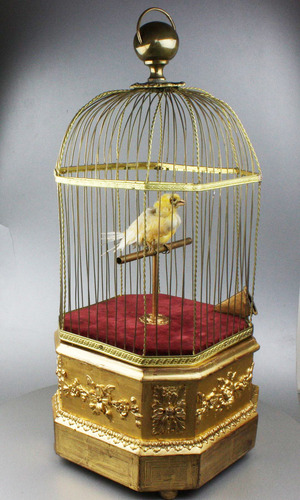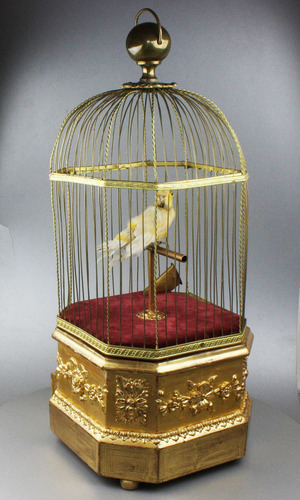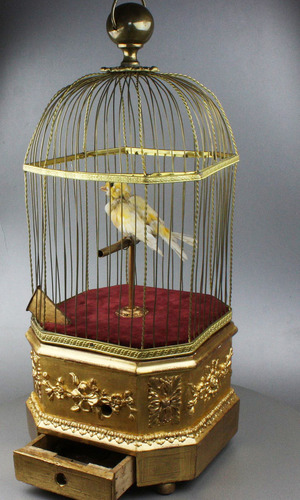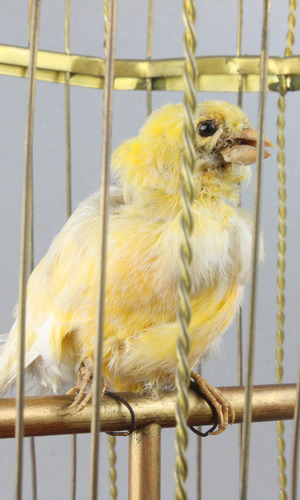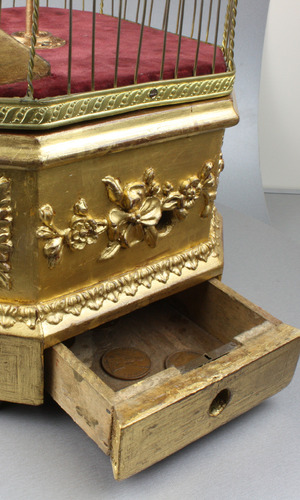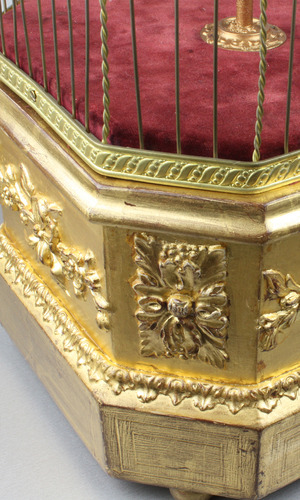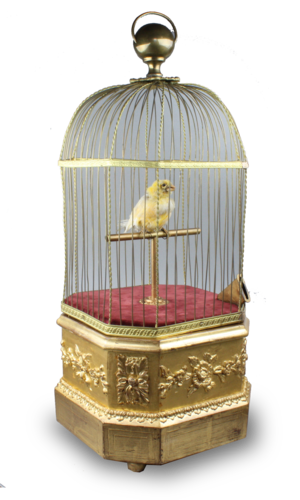
Antique coin-operated large singing canary-in-cage, by Bontems
A very good antique coin-operated large singing canary-in-cage, by Bontems
French
circa 1895
Who's a pretty boy then?
When wound and the pre-decimal one penny inserted into the coin chute, the perched bird begins to perform, by moving it's beak and tailfeather together and turning it's head from side-to-side, synchronised with the continuous birdsong, coming to a stop after approximately 30 seconds.
The taxidermy large single yellow canary, with predominant canary yellow coloured feathered plumage with white feathers to bib and lower back, naturalistic beak and full legs and claws is perched upon a polished gilt metal T bar with a cast rosette boss base. The red velvet covered base within slight domed square cage with canted corners, hoop and boss top, double twist bars flanking each corner and a barley tuft frieze intermediate band. It has coin chute to front-right corner rising between bars. The superb gilt gesso moulded base, revealing excellent gold leaf boundries and with the rouge tone picked out to edges, with fielded panels bearing floral swags, flowerheads and leaf bands with double incised borders to each plinth base panel.
Set on bun feet, with a period key and a stack of 1d. coins.
size - 23in. high, the base 10in. square - (58.5 x 25.5 x 25.5cm)
Point of interest
Yellow canarys were used in the 19th centuries by miners to check on dangerous gas levels in the subterranean environment. In little cages and placed at regular intervals along the tunnel network, if they fell over in their cages, the workforce left.
Here, a perfect taxidermy yellow canary is presented for a paying daylight audience, singing sweetly once the viewer profers an old penny.
In taverns and enclosed public places, coin-operated birds were very popular. But the use of such a specific bird is unusual and it is a delight to see one in such good fettle.
| STOCK No | 1521 |
| AVAILABILITY | Sold |
| PRICE | Sold |


